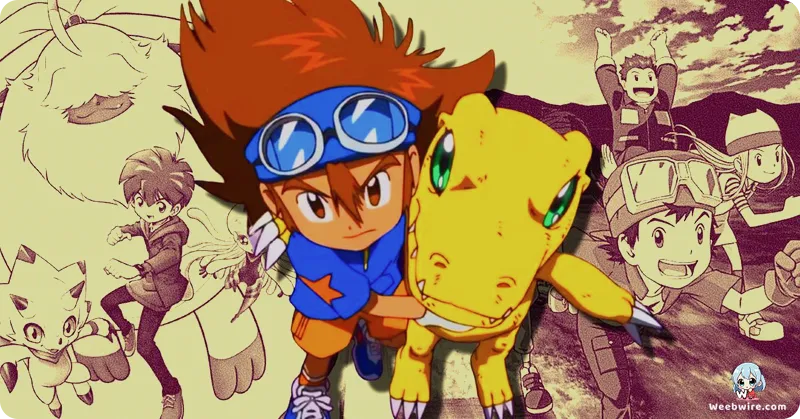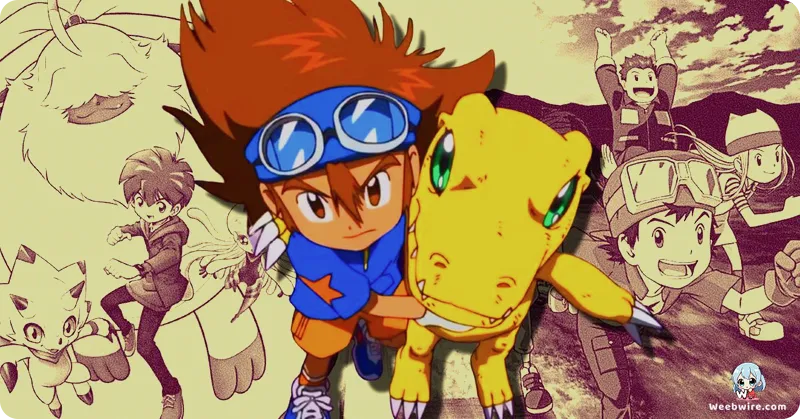Digimon Frontier's Revolutionary Shift: How Human-Digimon Fusion Redefined a Beloved Franchise

In April 2002, Toei Animation introduced Digimon Frontier to a fanbase that was eager, yet ultimately divided. This fourth television installment was not just another chapter; it represented a daring and highly debated pivot in the beloved Digimon saga. It fundamentally overhauled the core mechanic that had cemented the identity of its predecessors. While Digimon Adventure, Digimon Adventure 02, and Digimon Tamers celebrated the partnership between human children and their distinct Digimon companions, Digimon Frontier courageously cast its human protagonists as the Digimon themselves, introducing the groundbreaking concept of Spirit Evolution. This was not a mere cosmetic tweak; it was a deliberate creative gamble by Toei Animation to inject new life into the franchise, pushing narrative boundaries and intensely focusing on the internal struggles and profound growth of its human cast.
The Revolutionary Spirit Evolution
The most striking and widely discussed innovation of Digimon Frontier remains the Spirit Evolution. Instead of nurturing Digimon partners, the six chosen children—Takuya Kanbara, Koji Minamoto, Zoe Orimoto, J.P. Shibayama, Tommy Himi, and later Koichi Kimura—gain the astonishing ability to morph into formidable Digimon by merging with the ancient spirits of the Ten Legendary Warriors. This radical departure, where the human characters literally become the Digimon, was a significant creative risk. The visionary producers aimed to place agency and profound responsibility directly onto the young protagonists, making their personal evolution and emotional maturity the direct conduit to their power and control over their Digimon forms. This ingenious connection meant that any internal conflict, burgeoning fear, or lingering doubt experienced by the children would vividly manifest in their Digimon abilities, adding a layer of psychological depth previously hinted at but never so intrinsically woven into the primary combat system.
This audacious creative leap was born from a desire to sidestep formulaic repetition, ensuring the franchise remained fresh and captivating for its audience. While Digimon Tamers had subtly flirted with human-Digimon fusion through Biomerge Digivolution, Frontier propelled the concept to its ultimate extreme. The Toei Animation production team challenged themselves and their viewers with a story where the children were not just strategic commanders but visceral, active participants in every battle, experiencing the physical and emotional toll of their transformations firsthand. This approach also facilitated more immediate and impactful character development, transforming each evolution sequence and fierce battle into a crucible for their personal growth.
Character Journeys and Redemption
Character development in Digimon Frontier is deeply interwoven with the very fabric of Spirit Evolution. Consider Takuya Kanbara, the impulsive leader, whose struggles to master his wild Beast Spirit forms (BurningGreymon and Aldamon) mirrored his own hot-headed nature and his journey towards becoming a more thoughtful and responsible figure. Koji Minamoto, the archetypal lone wolf, discovered his true strength and connection through his Light spirits (Lobomon and KendoGarurumon), reflecting his internal battles regarding his estranged family and his eventual profound bond with his twin brother, Koichi.
The arc of Koichi Kimura stands as another compelling narrative. Initially manipulated by the nefarious Cherubimon, he transforms using the corrupted spirits of Darkness, becoming the imposing Duskmon and Velgemon. His powerful redemption journey, where he grapples with and ultimately triumphs over the darkness within, gaining control of his spirits to emerge as Lowemon and KaiserLeomon, is one of the series' most emotionally resonant storylines. This exploration of corrupted power and the profound possibility of redemption through self-acceptance presented a surprisingly mature theme for a children's anime, underscoring the show's willingness to delve into complex emotional territories.

The Lore of the Legendary Warriors
Beyond the central protagonists, the intricate design philosophy behind the Ten Legendary Warriors themselves offers a treasure trove of fascinating details. Each warrior, along with their associated human and beast spirits, draws rich inspiration from diverse mythologies and elemental forces, spanning from ancient Norse legends to vibrant Japanese folklore. For instance, Susanoomon, the ultimate fusion of all ten spirits, is directly inspired by the revered Japanese deity Susanoo-no-Mikoto, firmly grounding the digital world in a rich tapestry of ancient stories. The distinct appearances and formidable abilities of each spirit were meticulously crafted to reflect not only their elemental attributes but also the evolving personality traits of the children destined to wield them.
Initial Reception and Enduring Legacy
A lesser-known, yet crucial, aspect was the initial fan reception. While Digimon Frontier eventually cultivated a dedicated following and is now widely appreciated for its singular vision, it faced considerable skepticism upon its debut. Many long-time enthusiasts expressed a profound sense of loss for the traditional Digimon partners and the unique dynamics they shared with their human counterparts. The absence of these beloved partner Digimon became a significant point of contention, fueling fervent debates about whether the show genuinely retained the 'Digimon' essence. However, with the passage of time, as audiences revisited the series, its inherent strengths—particularly its unwavering focus on character-driven storytelling, its deep exploration of self-discovery, and its bold narrative choices—began to resonate, solidifying its rightful place as a unique and indispensable chapter in the franchise's enduring legacy.
Toei Animation's unwavering commitment to evolving the franchise is palpably evident throughout Digimon Frontier. They not only dared to alter the core mechanic but also significantly expanded the rich lore of the Digital World, portraying it as a realm intricately composed of data, its very structure and inhabitants profoundly influenced by the spirits of the past. The overarching antagonist, the formidable Lucemon, and his insidious ambition to consume the Digital World's data, provided a grand-scale threat that was directly intertwined with the children's unparalleled ability to embody the world's ancient protectors. The series' iconic music, from the electrifying opening theme 'FIRE!!' by the legendary Koji Wada to its various poignant ending themes, played an instrumental role in capturing the adventurous and often deeply emotional tone of the children's transformative journey, becoming cherished anthems for a generation of fans. Ultimately, Digimon Frontier stands as a powerful testament to creative courage, unequivocally proving that even a universally cherished franchise can boldly reinvent itself while remaining steadfastly true to its timeless core themes of friendship, unwavering courage, and profound self-discovery.
Credits
Digimon Frontier
Author
Akiyoshi Hongo
Cover Art
Katsuyoshi Nakatsuru
Studio
Toei Animation
Publisher
Bandai
Producers





